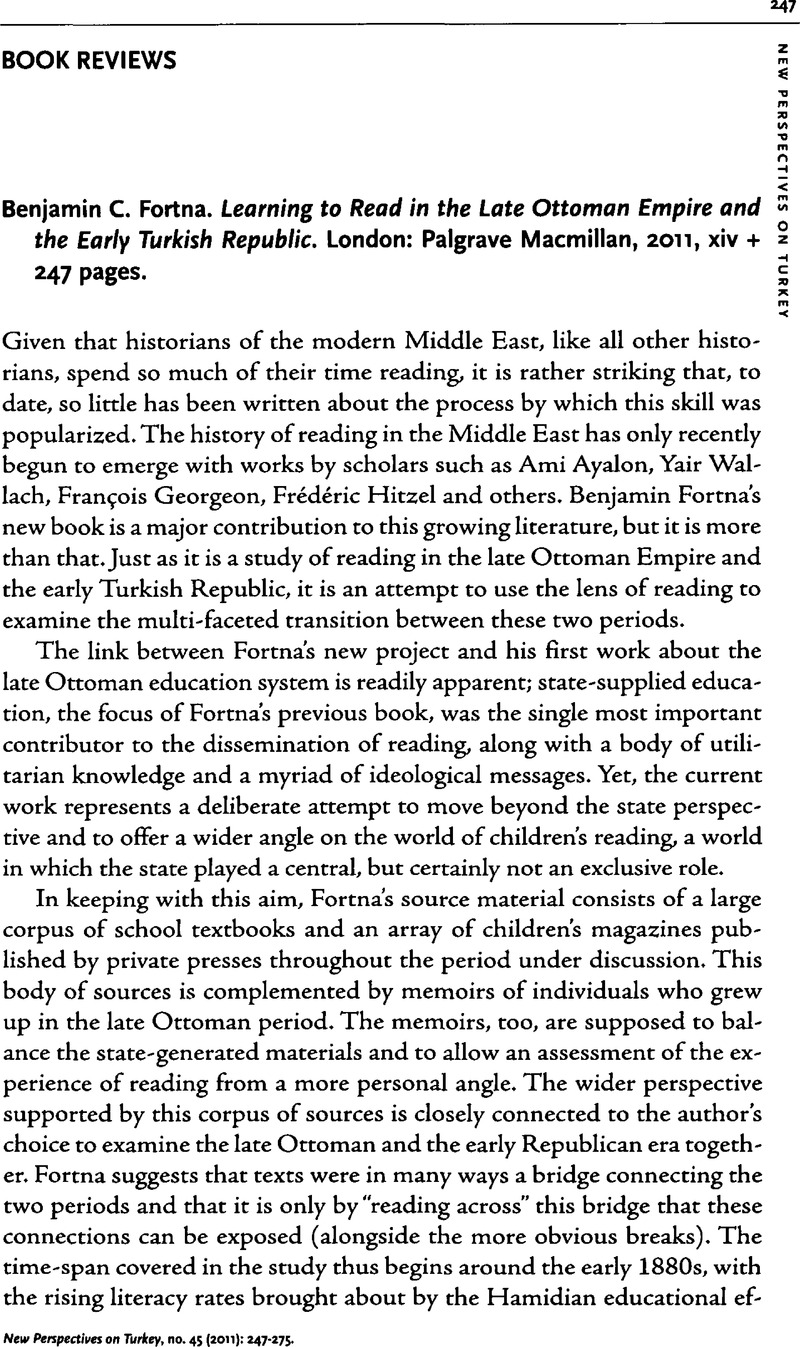No CrossRef data available.
Article contents
Benjamin C. Fortna Learning to Read in the Late Ottoman Empire and the Early Turkish Republic. London: Palgrave Macmillan, 2011, xiv + 247 pages.
Published online by Cambridge University Press: 21 July 2015
Abstract

- Type
- Book Reviews
- Information
- New Perspectives on Turkey , Volume 45: Special Issue on Turkishness and Its Discontents , Fall 2011 , pp. 247 - 252
- Copyright
- Copyright © New Perspectives on Turkey 2011
References
1 A growing body of literature examines various aspects of Middle Eastern modernity as perceived, experienced, showcased, or “acted out.” See for example Watenpaugh, Keith D., Being Modem in the Middle East: Revolution, Nationalism, Colonialism, and the Arab Middle Class (Princeton: Princeton University Press, 2006);CrossRefGoogle ScholarWishnitzer, Avner, “Our Time: On the Durability of the Alaturka Hour System in the Late Ottoman Empire,” International Journal of Turkish Studies 16, no. 1 (2010);Google ScholarOn Barak, , “Egyptian Times: Temporality, Personhood, and the Techno-Political Making of Modern Egypt, 1830–1930” (Unpublished Ph.D. dissertation, New York University, 2009);Google ScholarHanssen, Jens, Fin de Siècle Beirut: The Making of an Ottoman Provincial Capital (Oxford: Clarendon Press, 2005);Google ScholarMakdisi, Ussama, “Ottoman Orientalism,” The American Historical Review 107, no. 3 (2002);CrossRefGoogle ScholarÇelik, Zeynep, Empire, Architecture, and the City: French-Ottoman Encounters, 1830–1914 (Seattle: University of Washington Press, 2008).Google Scholar




